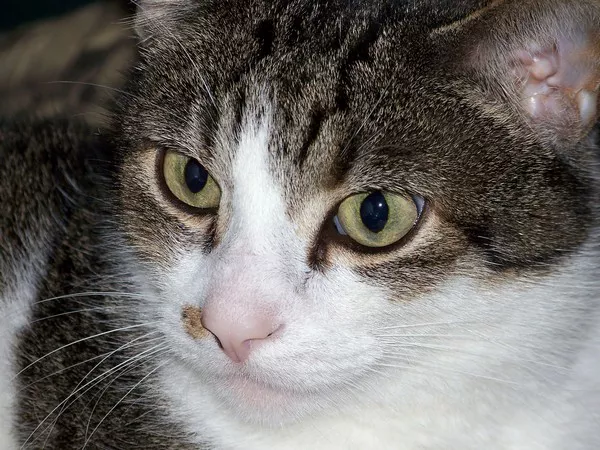Cats are renowned for their keen sense of smell, an integral part of their sensory repertoire. While this acute olfactory ability aids them in navigating their environment, it also makes them susceptible to certain smells that can be toxic and harmful. In this comprehensive article, we will explore the olfactory landscape of cats, shedding light on the various scents that pose a threat to their well-being.
Understanding the Feline Olfactory System:
Before delving into specific toxic smells, it’s crucial to understand how a cat‘s sense of smell works. Cats have a highly developed olfactory system, with approximately 45 to 80 million scent receptors in their nasal cavity, compared to a human’s five million. This heightened sensitivity enables cats to detect subtle changes in their surroundings and identify a wide range of scents.
However, this acute sense of smell comes with a downside – certain odors that may be innocuous to humans can be toxic to cats. Identifying and eliminating these potential dangers is vital for maintaining a safe and healthy environment for our feline companions.
Identifying 7 Smells Toxic to Cats
1. Essential Oils: Aromatic Dangers:
Essential oils have gained popularity for their therapeutic properties, but many cat owners may not be aware that certain oils can be toxic to their pets. Cats lack a specific enzyme in their liver, called glucuronyl transferase, which is necessary for metabolizing certain compounds found in essential oils. As a result, these oils can build up to toxic levels in a cat’s system.
Common essential oils that are toxic to cats include tea tree oil, peppermint oil, and citrus oils. Exposure to these oils can lead to symptoms such as lethargy, difficulty breathing, and in severe cases, liver damage. Cat owners should exercise caution when using essential oils in the home and ensure that diffusers are placed in areas inaccessible to their feline companions.
2. Lilies: A Fragrant Menace:
While lilies are prized for their exquisite blooms and fragrance, they pose a severe threat to cats. Various species of lilies, including Easter lilies, tiger lilies, and Asiatic lilies, contain compounds that can cause kidney failure in felines.
Even minimal exposure to lily pollen or ingestion of any part of the plant can be fatal for cats. Symptoms of lily toxicity include vomiting, loss of appetite, and lethargy. Cat owners should be vigilant about keeping lilies out of their homes, especially if they have a curious feline friend.
3. Certain Medications: Aromatic Perils:
The enticing smell of medications can be a double-edged sword for cats. While certain medications may have a pleasant odor to humans, they can be toxic to cats. Non-steroidal anti-inflammatory drugs (NSAIDs), acetaminophen, and antidepressants are examples of medications that can be harmful to felines.
Even topical medications, such as creams or ointments, can pose a risk if ingested or absorbed through the skin. It’s crucial for cat owners to store medications securely and administer them only under the guidance of a veterinarian.
4. Household Cleaners: Invisible Threats:
Common household cleaners often contain chemicals with strong odors that may attract curious cats. Unfortunately, many of these chemicals are toxic and can pose a serious threat to feline health. Cleaning products containing bleach, ammonia, or phenol can cause respiratory distress, irritation, and gastrointestinal issues in cats.
To safeguard their pets, cat owners should opt for pet-safe cleaning products or ensure that cleaning agents are thoroughly rinsed from surfaces. Additionally, storing cleaning supplies in a secure location can prevent accidental exposure.
5. Certain Foods: Fragrant Hazards:
While some human foods are safe for cats in moderation, others can be highly toxic. Certain foods emit enticing aromas that may tempt cats but can lead to severe health issues. Onions and garlic, for example, contain compounds that can damage a cat’s red blood cells, leading to anemia.
Chocolate, another aromatic delight for humans, contains theobromine, which is toxic to cats. Symptoms of chocolate toxicity include restlessness, increased heart rate, and in severe cases, seizures. Cat owners should be cautious about leaving these aromatic foods within reach of their curious felines.
6. Antifreeze: A Sweet-Smelling Menace:
Antifreeze is known for its sweet taste and smell, making it appealing to cats. However, it contains ethylene glycol, a highly toxic substance that can cause rapid kidney failure and be fatal even in small amounts.
To prevent accidental ingestion, cat owners should be diligent about checking for leaks in their vehicles and promptly clean up any spills. Storing antifreeze in secure containers and placing them out of reach can help mitigate the risk of exposure.
7. Tobacco Products: A Pungent Danger:
The distinct smell of tobacco can be enticing to some cats, but the nicotine and other harmful chemicals found in cigarettes and other tobacco products are toxic. Ingesting or even inhaling secondhand smoke can lead to nicotine poisoning in cats, causing symptoms such as increased heart rate, tremors, and in severe cases, respiratory failure.
Cat owners who smoke should do so in well-ventilated areas away from their pets and take care to secure tobacco products to prevent accidental ingestion.
See Also: 12 Human Foods That Are Poisonous to Cats
Conclusion:
Maintaining a safe environment for cats involves being vigilant about the smells they encounter daily. Understanding the olfactory sensitivities of felines and identifying potential toxic odors can go a long way in ensuring their well-being. Cat owners should prioritize the use of pet-safe products, secure toxic substances, and be aware of the dangers associated with certain scents. Regular veterinary check-ups can help monitor feline health and address any concerns promptly. By taking these precautions, cat owners can create a fragrant and safe living space for their cherished companions.

![Are Birman Cats Cuddly?[Revealed!]](https://www.catsmeowweb.com/wp-content/uploads/2023/06/birman-cat-26.webp)






















